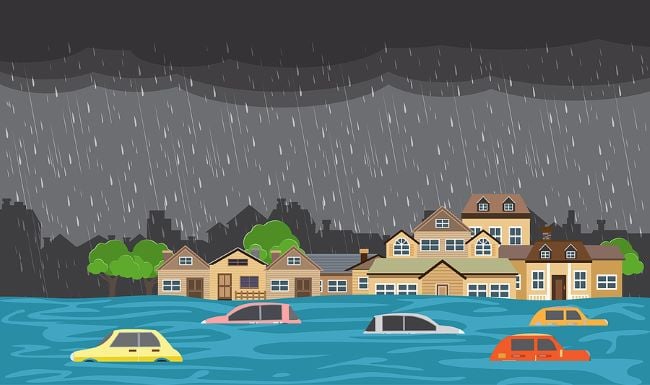Your New York Flood Risks May Be Greater Than You Realize

New York flood risks are rising. Some areas (such as Westchester, New York) have an especially high threat of flooding. Here’s what you need to know about your flood risk, planning for an emergency, and securing the insurance coverage you need.
NFIP and Private Flood Insurance Options
Your standard homeowners insurance policy won’t cover flood damage. Nor will a standard renters insurance policy or commercial property insurance policy. To secure coverage, you need to purchase a flood insurance policy. In high-risk areas, mortgage lenders may even require flood insurance.
The National Flood Insurance Program (NFIP) is available to property owners, renters, and businesses in participating NFIP communities, independently of whether your area is considered high risk. Securing coverage can be a smart move – FEMA says approximately 25% of all claims come from areas with low to moderate flood risks.
The NFIP has a limit of $250,000 for building coverage for single-family residential businesses and a $100,000 content limit. The limit for commercial buildings is $500,000 for building coverage and $500,000 for contents.
If the NFIP terms do not meet your needs, you may be able to secure private flood insurance.
Rising Risks and Risk Factor 2.0
If you’ve owned your property for a long time, your flood risks may have changed over the years.
According to Risk Factor, rising sea levels, new weather patterns, and stronger storms are resulting in increased flooding risks. Other factors, such as increased development in coastal areas and structural failures of levees and dams, can also contribute to higher risks.
New flood models and maps can account for these changing risks. FEMA recently updated the NFIP with Risk Rating 2.0 – a new methodology designed to assess flood risks more accurately. Since April 1, 2022, all policies have been subject to the new rating system.
FEMA says there are 171,100 NFIP policies in force in New York. For 32% of these policies –just over 54,000 – the new Risk Rating 2.0 pricing model caused an immediate decrease in premium costs. However, 54% of policyholders experienced a premium increase of up to $120 a year, 7% of policyholders experienced a premium increase of between $120 and $240 a year, and 7% of policyholders experienced an increase of more than $240 a year.
Flood Risks in New York
As a coastal state, New York faces flood risks from storm surges as well as from hurricanes and other types of storms.
According to Risk Factor, New York state has a moderate flood risk. However, New York flood risks are much higher in certain regions. Westchester, for example, has a major flood risk, according to Risk Factor.
When a property is flooded, the damage tends to be substantial. Over the last 10 years, FEMA says the average NFIP claim payout in New York has been $55,300.
Preparing for a Flood
Floods can happen fast. Make sure you’re ready.
Know your flood risk. FEMA’s flood maps can help you understand your flood risks and make informed decisions. You should also learn about any evacuation zones in your area. For example, residents in New York City should know their NYC hurricane evacuation zone.
Plan for an emergency. If your area would become dangerous in a flood, you may need to evacuate. Prepare emergency supplies, an evacuation route, and a communication plan. Ready New York provides guidance on creating an emergency plan.
Reduce your property’s risk. FEMA has tips on low-cost home improvement projects that can reduce your property’s flood risk, such as installing flood vents or changing your landscaping to improve runoff.
Monitor the weather. If a storm is approaching and flooding is likely, you need to be ready to protect your property and keep yourself safe. You can sign up for New York Alert to receive emergency notifications.
Purchase flood insurance. NFIP policies typically have a 30-day waiting period. This means you won’t be able to file a claim immediately after purchasing a policy. If you wait until the weather report predicts flooding, it will be too late to buy coverage.
Don’t forget about your vehicles. Flood waters can total a car. The flood insurance policy for your home won’t cover your vehicles, but an auto insurance policy with comprehensive coverage will cover flood damage.
Do you need help securing flood insurance for your home or another property? Reach out to BNC for help.







